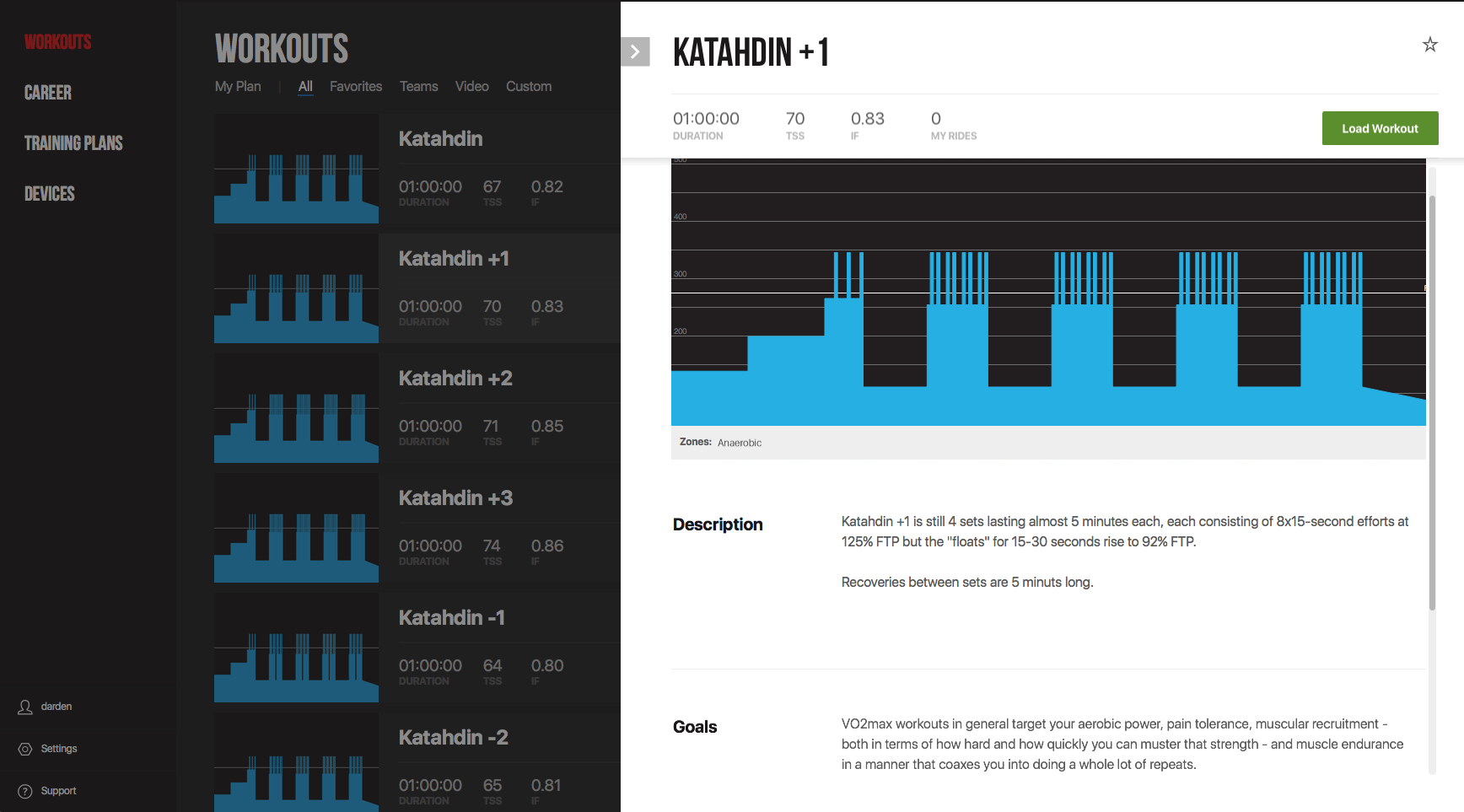

Having done the longer tests and now the newer one, I've found that the results are pretty similar, and the ramp test isn't as long, so I'll take it. TrainerRoad used to use a different test protocol of either a single 20-minute effort or two 8-minute blocks, but those have been superseded by the new test which has the advantage that it can be completed with the trainer in ERG mode where it simply adjusts the power to follow the line. In theory this is the power that you can hold for an hour most of us would struggle to push out whatever TrainerRoad decrees our FTP is for that long, but the numbers are consistent with other platforms. Once you've collapsed onto your bars the app will do the sums and tell you what your FTP is. This is a session where you start at around 50% of your functional threshold power (FTP) – you'll have to estimate this if you don't know what it is – and it gets harder and harder until you physically can't do it any more. The first line you'll follow, if you're doing things in order, is a ramp test. That line you're following is embedded in a big ecosystem which is designed to take you from first principles to whatever particular goal you have in mind. That's it: start at one end and see if you can make it to the other, which will be anywhere between 20 minutes and several hours away. If you're wearing a heart rate monitor then there's a red line showing that, and a white line for your cadence. You can see the effort you're supposed to produce as a sort of chart of green blocks, and you can see the actual power you're putting out as a yellow line on top. The higher the line goes, the harder you're working. Cons: Not as immersive as the likes of Zwift, requires commitmentĪt its most basic, TrainerRoad is following a line across a screen.

Pros: Very focused training, lots of workouts, counts outdoor rides in your training load.It's not as visually or socially exciting as Zwift, but it's more focused on getting results, and if results are what you're after it may end up being a better way to spend your monthly subscription. High-volume plans are best for cyclists with extensive structured training experience as they require a significant investment in time and recovery.If you're serious about training indoors, and you have a specific goal in mind, then TrainerRoad is an extremely useful tool that'll help you to use your time effectively. Mid-volume plans are great if you have some experience with training and can commit to five workouts a week. If you’re new to cycling training or have a hectic personal schedule, we recommend a low-volume plan. This will be a volume compatible with your schedule that provides you with enough rest in between workouts. When choosing a volume, we advise the one that you can consistently complete. Whenever you start a new training plan, you’ll need to choose a volume for your plan. While the weekly hourly commitment varies, on average, low-volume plans have three structured workouts per week, the mid-volume plans have five, and the high-volume plans have six. TrainerRoad training plans come in three volumes: low, mid, and high. So whether you are racing cross-country MTB, riding a Gran Fondo, or simply want to improve your fitness, there’s a plan for you. TrainerRoad’s training plans meet you wherever you’re at by matching your current fitness level, available training time, and goals. You will test your event readiness while gradually trimming the overall training stress to a point where you will realize your best performance. As you move into the Build Phase, you’ll begin to increase the weekly training stress with more event-specific work.įinally, the Specialty Phase strives to be as specific to your target event and performance goals as possible where the workouts reach the height of their intensity, but each week’s training volume experiences a mild decline. Your first step in the cycling training process is to establish that foundation in what’s known as the Base Phase with the goal of strengthening your aerobic energy system. This is the Base, Build, and Speciality cycle. Progressive training begins by building general base fitness, then layers on more specific work, eventually bringing your overall fitness to a well-timed peak. This progressive structure, paired with well-timed training cycles and goal-oriented workouts, helps you reach peak performance for a goal event or discipline.Įvery TrainerRoad training plan divides your seasons into three distinct phases. The best cycling training plans progressively add more to your workouts at the right time, while giving you the rest needed to recover and adapt.


 0 kommentar(er)
0 kommentar(er)
